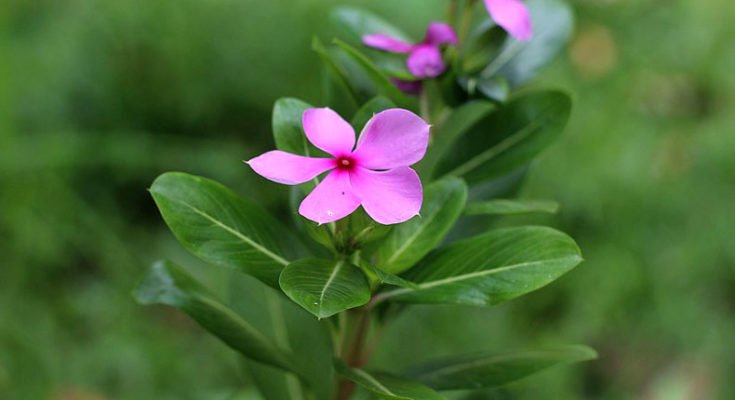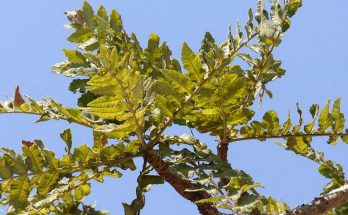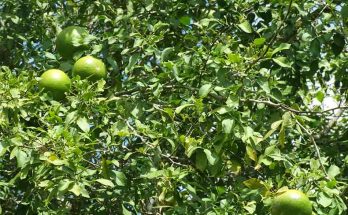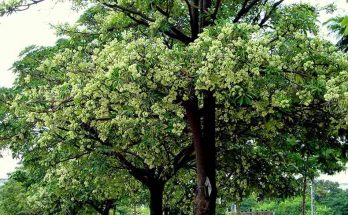Periwinkle – the great herb to combat Diabetes and Cancer. Image Courtesy – Wikimedia
Catharanthus Roseus is normally known as the Madagascar Periwinkle or Blushing Periwinkle. Other English names incidentally utilized like Vinca, Cape Periwinkle, Rose Periwinkle, Ruddy Periwinkle, etc. Catharanthus Roseus has many names, in Assamese, it is called “Noyon Tora”, in Bengali it is called “Noyontara”, in Marathi, it is called “Sadaphuli” etc.
It is an evergreen herbaceous plant that grows around 1 meter in height. The leaves are elliptical, 2.5 cm – 9 cm long and 1 cm – 3.5 cm wide, glossy green, with a pale midrib. The blossoms are white to dim pink with a darker red focus, with a basal tube 2.5 cm – 3 cm long and a corolla 2 cm – 5 cm width with five petal-like flaps. It is generally developed in subtropical and tropical regions of the world.
The plant has a long history of utilization in Ayurvedic pharmaceuticals, conventional Chinese medication, and other curative systems. Western therapeutic science started looking into extracts of Periwinkle amid the 20th century and discovered a few chemical compounds useful in Cancer treatment.
Records demonstrate that Catharanthus Roseus or Periwinkle has been utilized as a restorative herb for quite a long period. The plant has naturalized all through subtropical Asia, Africa, and also in America and has been utilized both for decoration and medicine. All parts of the plant are useful including the roots, leaves, blossoms, and stems. Alkaloids utilized as a part of the advanced drugs are produced from the plant.
Indian Ayurvedic system of treatment and other traditional systems use Periwinkle for the treatment of diabetes. Extract from its leaves is even helpful to clear out insect stings. The flowers are additionally utilized for treating Asthma and excessive gas. Other traditional systems utilize the plant to relieve Tuberculosis, painful Menstruation, Rheumatism, etc.
Read: Arjuna – incredible protection to Cardiovascular disease
The leaf extract of Periwinkle is utilized as a local medicine for the treatment of diabetes everywhere throughout the world. In an examination, the leaf juice of Periwinkle has been assessed for its hypoglycemic movement in typical and Alloxan-induced diabetic rodents. Alloxan is a derivative of oxygenated Pyrimidine. It is introduced as Alloxan Hydrate in a watery solution. Since it specifically destroys the insulin-delivering beta-cells found in the pancreas, Alloxan is utilized to prompt diabetes in lab creatures. A few studies have demonstrated that Alloxan is not like a toxic element to the human beta-cell, but differ glucose uptake components in human beings and gnawing mammals like rats, mice, squirrels, hamsters, porcupines, etc.
The leaf extract of Periwinkle created depletion in blood glucose of both typical and diabetic rabbits and the result was similar to that of the standard antidiabetic medicine Glibenclamide, also familiar as Glyburide. The results showed activity for a long period of time in lessening of blood glucose because of Periwinkle. The active compounds of Periwinkle accelerated through upgrading insulin discharge from the β-cells of Islets of Langerhans. It could be defined as an extra-pancreatic mechanism.
The research on rodents obviously demonstrated a remarkable anti-diabetic movement with the leaf juice of Catharanthus Roseus or Periwinkle. That was the reason for which Ayurvedic Physicians used leaves of Periwinkle for years for controlling diabetes. Some of them are of the opinion that it is so powerful to control diabetes that consumption 3-4 fresh leaves daily for 10-12 days can make the level of diabetes into a normal count for any diabetic patient.
In Ayurveda, the leaves, the seeds, the blooms, and the roots of Periwinkle are utilized for the treatment of Leukemia, Menorrhagia also. The root and bark contain the alkaloid Alstonine which has been utilized for its cooling impact and its capacity to reduce blood pressure. Vincristine and Vinblastin – these two anti-cancer drugs are made from Periwinkle. Periwinkle contains more than 70 alkaloids. It has restorative significance owing to the proximity of alkaloids like Ajamalicine, Serpentine, and Reserpine which are extraordinary for those hypotensive and antispasmodic properties.
Periwinkle has been indicated to be powerful in the treatment of different types of diseases like Lymphomas, Acute Lymphocytic, Leukemia, Breast Cancer, Multiple Myeloma, Soft Tissue Sarcomas, Neuroblastoma, etc. Bio-chemical compounds available in Periwinkle prevent the development of new blood vessels that propel tumour growth. It is used against Leukemia, which is defined by a huge number of white cells in the blood.
Two of the alkaloids, Vinblastine and Vincristine have been scheduled and formed into solutions for the production of anti-cancer drugs. This plant has been utilized for quite a long time to treat Diabetes, Hypertension, Asthma, Menstrual problems, Constipation, etc. However, in present days, periwinkle is an example of overcoming adversity in the quest for anti-cancer medicine which nature has gifted us.





